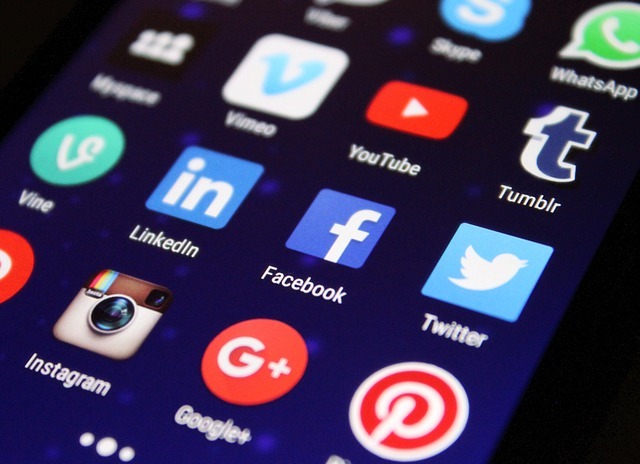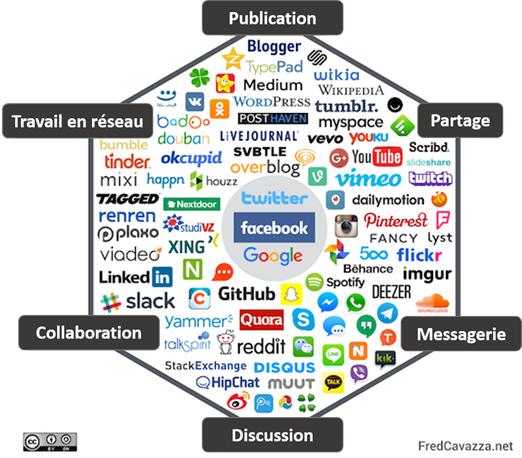Pedagogical Uses of Social Media: Summary of a REFAD Workshop
From the first emails sent by US researchers in the 1970s to the most modern websites like Pinterest, the Internet’s history is intertwined with that of humanity. The web has allowed us to connect with others around the world. We all seek out social connections and interactions – they are part of human nature.

That being said, when looking at it from a pedagogical perspective, how can we combine “social networks” and “education” in the most optimal way? This question probably sounds very familiar if you have ever pondered how to bring social networks into your classroom.
To help you find an answer, this article proposes a summary of the workshop on the pedagogical uses of social networks presented by Nelson Jean, teaching assistant, and Michel Gendron, e-learning specialist (both at UQAR), which was organized on February 22, 2017, by the REFAD (Réseau d’enseignement francophone à distance du Canada).
The aim of this workshop was to enable participants to select and use the right tool from their teaching methods to connect with students and motivate them to participate, while respecting a few rules that are important for teachers to keep in mind.
Learning How to Navigate a World in Perpetual Change
While initially, social media were mere spaces for conversation and sharing, they have become prime channels of information, communication and interaction. After many years of functional improvements and buyouts, major social platforms such as Facebook, Twitter and Google+ have become the dominant media of the early 21st century and lie at the heart of this ecosystem. Not only do these 3 companies have the most visible services, but they also create a virtuous (or vicious?) cycle by relaying published, shared and discussed content.
The multitude of services that make up social media can be broken down into 6 main usage categories:

The 2016 Social Media Landscape by Fred Cavazza presents the 6 main uses of social media: publishing, sharing, messaging, discussing, collaborating, and networking.
When you want to use social media with your students, you first need to consider the skill level they have in using these tools. A student survey will allow you to target their strengths and weaknesses in this area. The following questions should also be asked:
- What are the real benefits and limitations of social media in education?
- hat are the rights and responsibilities associated with their use?
- How and where to start?
Benefits and Limitations of Social Media in Education
When considering social media and their educational potential, many benefits, but also limitations (or at least fears) come to mind. The main strengths and weaknesses identified by the workshop authors are as follows:

The use of social media in pedagogy seems to have more advantages than limitations. Among the benefits: a positive impact on student motivation, a more effective and interactive communication method, as well as multiple opportunities to inform, share content, network and solve problems.
Usage Rights and Responsibilities
If there is a sore point to using social networks, it must be the rights and responsibilities that often remain implicit, sometimes to the detriment of ethics and respect for others. Knowing each of these rights and responsibilities has grown to become a daunting task in recent years, due to the difficulty in establishing the roles and responsibilities of all actors involved. This, however, is part of the teacher’s role when training students, in order to help them develop greater responsibility for their actions, whether they take place in a real or virtual setting.
It is also essential to become more aware, as a teacher, of the difference between work and private life, and in turn, share this awareness with students. The boundary between these 2 spheres has become very thin and not always easy to manage because of the speed with which communications have become accessible and pervasive in our society.
Finally, what is the role of the educational institution in the management of all this? According to the authors of this workshop:
- Institutions often offer little (or no) support to teachers and students.
- The responsibilities of the parties involved are not clearly defined.
- Copyright management has become a priority and many CEGEPs now offer relevant information and how-to guides. You can find important information on this subject on the Vitrine technologie-éducation website, more specifically in the laboratory entitled “Le droit d’auteur au collégial” (available in French only).
The hosts of this workshop remind us that we must be aware of the fact that these different platforms where we virtually store our lives give themselves many rights to use photos, texts, videos or any other document you have deliberately chosen to store on their servers. They do not own these materials, but they can legally resell information on your various activities – another important point to remind your students of!
Looking ahead!
In under a decade, social networks will have become banal and will be an integral part of the educational environment. The use of made-to-measure platforms, which have yet to be developed, will allow everyone to create their truly unique digital identity. Whether or not one is in favour of the use of social networks, it seems unreasonable to ignore them. Without necessarily exploiting them in class immediately, mastering these networks and being able to guide students in their use of them seems essential to me. They are an interesting starting point for many debates that are part of our students’ universe and which they feel concerned by. These platforms can be powerful factors of motivation and commitment. Social networks, used pedagogically, allow students to create a genuinely controlled and asserted digital identity.
In another article (in French), we explore the practical aspects related to the use of the 3 main social networks that are Twitter, Facebook and Google+.

